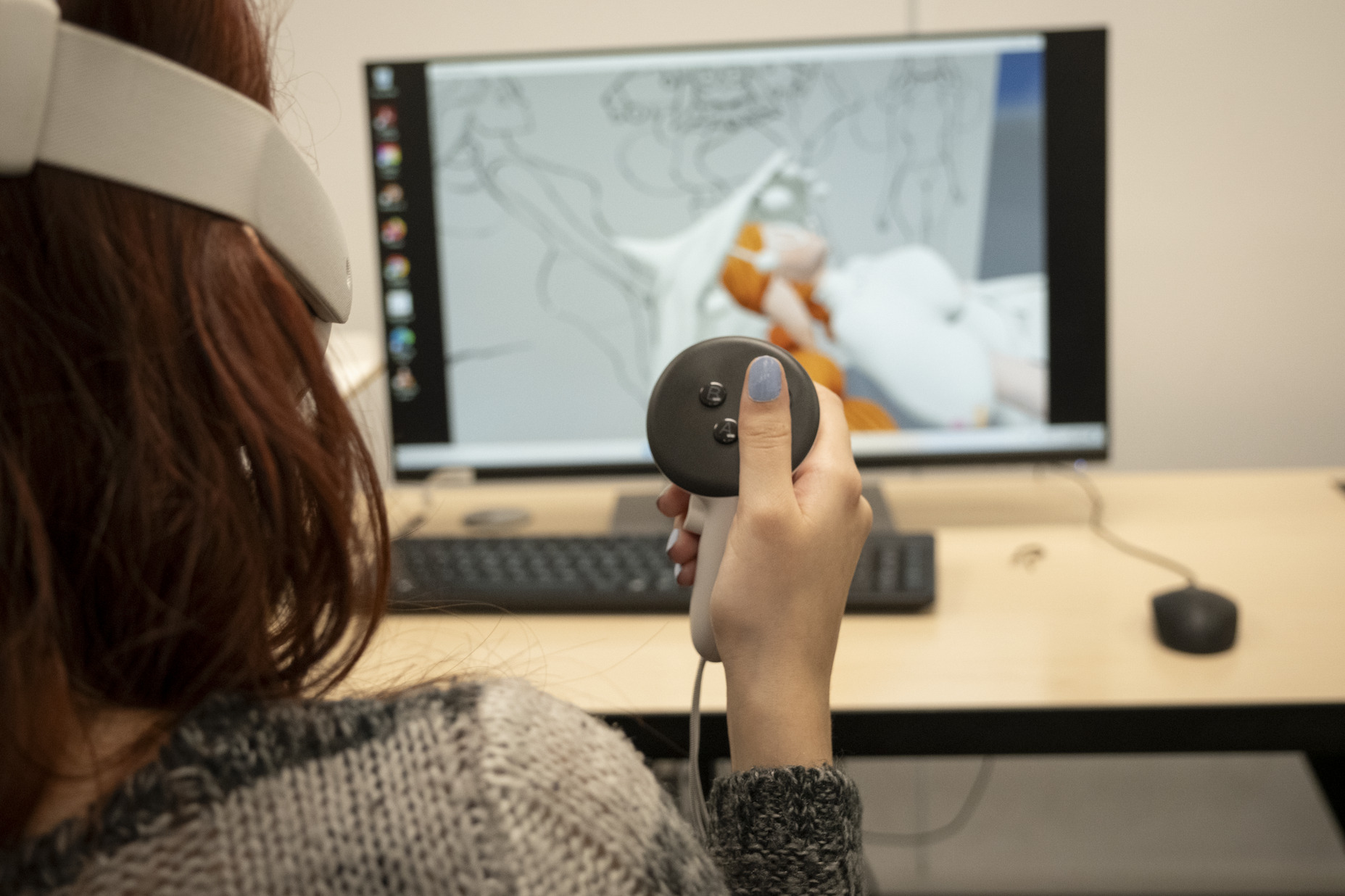As a leader in innovation and creative and academic achievement, Tyler School of Art and Architecture has restructured one of its storied departments. In July 2024, the school renamed and expanded its Design and Illustration Department, formerly known as the Department of Graphic and Interactive Design. Overall, the changes reflect shifts in the industry, particularly around the use and focus of new technology.
This undertaking, which began more than six years ago, has resulted in new and revised degree programs. In addition to the reshaped BFA in graphic and interactive design, the department has created a BFA in illustration and emerging media, which launched in fall 2024. And it will launch a BFA in user experience (UX) and user interface (UI) design in fall 2025.
“These new degree programs evolved naturally from the work we were already doing and the professional paths our students were pursuing,” said Kelly Holohan, professor and program head of design and illustration. “They’re a perfect fit for our vision. Equally important, all three degrees are designed to complement and enhance one another, fostering a cohesive and interconnected learning experience.”
These programs will ensure an even more comprehensive education.
“Because we now have these three BFA degrees, students are able to dive deeper,” added Abby Guido, associate professor and curriculum coordinator of design and illustration. “While they still get a general sense of what design and image-making are, when they select their major, we’re able to give them a sequence of classes that scaffolds their learning within that field, and we’ve created a wide array of electives.” These electives include a murals class within illustration, an accessible design course and a brand identity for sports class, among many others.
The new BFA in illustration and emerging media allows students to master all forms of illustration as well as visual narrative and media integration. The program was fast-tracked for this fall as transferring University of the Arts students expressed interest in it. “At its core, Tyler’s design program has always been rooted in image-making, so developing an illustration program felt like a natural extension of our strengths and expertise,” said Holohan.
“The illustration program here is unique, especially being embedded with design,” said Matt Curtius, associate professor of design and illustration. “These fields work in tandem all the time. When launching this forward-thinking illustration program, we talked about what illustration is—communicating with pictures through mass communication channels. In the past that meant the printed page and computer screen. Looking forward, it’s going to mean those things and more.”
The upcoming UX and UI design major will focus on the growing field of digital design and user interaction. Students will be introduced to user research, information architecture and interface design, acquiring the skills to develop intuitive and user-friendly experiences. This knowledge is valuable across industries, enhancing students’ career opportunities.
The graphic and interactive design program, which has been part of Tyler for more than four decades, builds students’ competencies in composition, color theory, layout, illustration and typography. Additionally, it incorporates emerging technologies such as artificial intelligence (AI), augmented reality, motion design, multimedia storytelling and UX design.
The department will also offer minors in all three programs, which it believes will further expand its reach. “For design and illustration and Tyler more broadly, a portfolio is required to get in. The minors are an opportunity to open our doors to more students to study alongside our majors,” said Guido. “They’ll gain skills that will complement what they’re studying in other disciplines such as advertising, computer science and business. And our Tyler students in other departments can take these classes.”
The MFA in interactive and graphic design has also been reconstructed to provide greater flexibility and better align with students’ career aspirations. As part of the updated program, MFA students can now tailor their experience by choosing professional practice courses that match their goals. Those aiming for a teaching career can opt for a teaching in higher education course, while students focusing on studio practice or entrepreneurship can select studio management or portfolio preparation courses.
Interest in the department’s programs, which feature a strong STEM foundation, continues to expand. Design and illustration student enrollment is up 13.2% in fall 2024 compared with fall 2023 based on credit hours generated. And in spring 2025, more than 80 students are expected to graduate, up from 40 in 2015.
“At an R1 university of our size and in the city, the arts are very valuable,” said Guido. “It’s important that we exist and that students approach problems with a creative mindset. We’re excited to open up more opportunities. We feel the new structure of the department will have a positive impact on how students approach their studies.”

